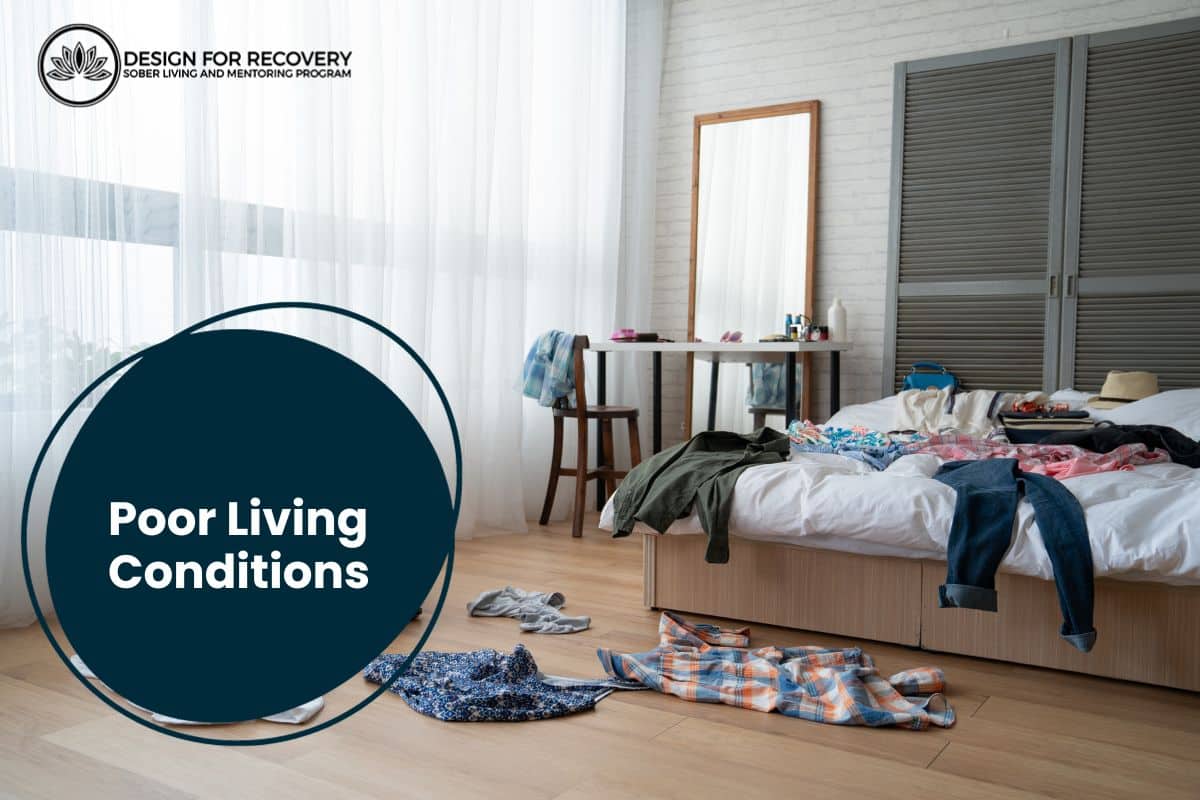Recovering in a Southern California sober living home can be exciting and daunting. It offers a supportive environment for individuals working to overcome addiction, but it’s essential to recognize that it’s not always smooth sailing.
Understanding the potential problems that individuals may encounter in sober living homes is crucial because it helps residents, their families, and the staff address and navigate the difficulties that can arise on this journey toward sobriety.
Acknowledging these challenges is not about discouraging individuals from pursuing sober living but rather about empowering them with knowledge and preparation, including essential life skills. When residents, their families, and staff know these potential issues, they can proactively reduce them.
Understanding the problems that can arise in these environments allows for the following:
Better preparation
Effective solutions
Enhanced support
Informed choices
Ultimately, recognizing and addressing these problems fosters an environment where residents can focus on their recovery more confidently, knowing that their concerns are acknowledged, and their well-being is a top priority.
Lack of privacy
One of the notable challenges that residents may face in sober living homes is the need for more privacy. These homes typically emphasize communal living and require residents to share various living spaces, including bedrooms, bathrooms, and common areas. While this collaborative approach has benefits, it can pose a significant problem for individuals who highly value their privacy.
Shared Bedrooms:

Sober house residents share bedrooms, which means individuals may live in close quarters with one or more roommates. This arrangement means individuals may live in close quarters with one or more roommates. This adjustment may lead to discomfort for those accustomed to having their personal space.
Shared Bathrooms:
Similarly, residents in sober living homes often share bathroom facilities. Coordinating bathroom schedules and sharing this space with others can be challenging, mainly when someone prefers solitude.
Common Areas:
Communal living also extends to common areas like living rooms and kitchens. While these shared spaces encourage interaction and support, they may provide a different level of privacy than individuals are used to in their homes.
Privacy is more than just a luxury; it’s a fundamental aspect of well-being. It allows individuals to decompress, reflect, and have personal moments free from external scrutiny. For some, a lack of privacy can lead to feelings of discomfort, stress, or even anxiety.
Risk of relapse
A significant concern associated with sober living homes for young adults is the potential risk of relapse. While these environments aim to provide support and structure for recovering addicts, there are instances where they may not offer enough support, ultimately increasing the risk of relapse.
Limited Professional Oversight: Unlike residential treatment centers or inpatient rehab facilities, sober living homes often have fewer professional staff members on-site. This means that young adult residents may not have immediate access to medical or therapeutic support if they experience a crisis or intense cravings.
Variability in House Rules: Sober living homes vary widely in terms of their rules and regulations. Some may have strict policies, while others may be more lenient. This variability can impact the level of accountability and structure provided to residents.
Isolation and Loneliness: For individuals who do not actively engage in the recovery housing community, feelings of isolation and loneliness can set in. Residents may be more susceptible to relapse triggers without proper support and connection to peers who understand their struggles.
Criminal justice issues
One of the significant challenges associated with sober living homes is the potential intersection with criminal justice issues, particularly for individuals who are homeless and struggling with substance use disorders.
Higher Risk for Homeless Individuals: Homelessness is a complex issue, and many individuals experiencing homelessness also struggle with substance use disorders. Sober living homes may become a refuge for these individuals, providing a stable environment to work on their recovery. However, their status as homeless individuals can complicate their legal situation.
Legal Implications: Some residents of sober living homes may have unresolved legal issues, including past criminal charges or ongoing legal battles related to their substance use. These issues can add a layer of complexity to their recovery journey, as they may be navigating court-mandated requirements, probation, or parole.
Lack of Adequate Legal Support: Sober living homes, including halfway houses, provide residents with a supportive and substance-free environment. They may not have the resources or expertise to offer comprehensive legal assistance to individuals dealing with criminal justice issues.
Poor living conditions
Another significant concern that can arise in some sober living homes is the issue of poor living conditions. This challenge pertains to the quality of the physical environment within the sober living facility.
Unsanitary Living Spaces: In certain instances, sober homes may not prioritize or maintain sanitary living conditions. Shared bedrooms, bathrooms, and common areas need proper cleanliness and hygiene. This can pose health risks to residents, especially those in fragile states of early recovery.

Inadequate Food and Nutrition: Nutrition plays a crucial role in recovery. Some sober living homes may need help to provide residents with nutritious meals, leading to dietary deficiencies. Inadequate food quality and variety can impact residents’ physical health and well-being.
Substandard Facilities: Some facilities may need more essential amenities, making everyday life more challenging for residents. Issues such as unreliable heating or cooling systems, plumbing problems, or structural deficiencies can contribute to discomfort and dissatisfaction.
Lack of support for co-occurring disorders
Another significant challenge in some sober living homes is inadequate support for individuals with co-occurring mental health disorders. This issue highlights the importance of simultaneously addressing substance use disorder and mental health conditions.
Co-occurring Disorders: Many individuals with substance use disorder also have co-occurring mental health conditions such as depression, anxiety, bipolar disorder, or post-traumatic stress disorder (PTSD). These mental health challenges can significantly impact an individual’s well-being and recovery.
Limited Mental Health Services: In some sober living homes, there may be a shortage of mental health services or trained professionals to address co-occurring disorders effectively. This gap in care can result in residents not receiving the necessary treatment and support for their mental health needs.
Impact on Recovery: Co-occurring mental health disorders can exacerbate substance use issues and complicate recovery. Individuals may struggle to manage their mental health symptoms without appropriate addiction treatment and support, increasing the risk of relapse.
Lack of diversity
Sober living homes, while providing crucial support for recovery, often face the challenge of not being diverse in terms of race, ethnicity, gender, or sexual orientation. This lack of diversity can pose significant difficulties for individuals seeking a safe and inclusive environment.
Underrepresentation: Some sober living homes may have underrepresentation from various racial and ethnic groups, genders, or members of the LGBTQ+ community. This underrepresentation can make residents feel isolated or like they don’t fully belong.
Comfort and Support: A lack of diversity can affect the comfort levels of residents, particularly those from marginalized communities. It may hinder their ability to connect with fellow residents and receive the full support they need.
Understanding Intersectionality: Individuals in recovery often have unique experiences influenced by their racial, ethnic, gender, and sexual orientation backgrounds. Not addressing these intersectional experiences can be a missed opportunity for providing personalized care.
Lack of Regulation and Oversight
Sober living homes operate in a complex landscape with varying degrees of regulation and oversight, and this lack of consistent standards can significantly impact the quality and safety of these environments.
Inconsistent Regulations: Sober living homes often fall into a regulatory gray area. While some states or localities have established guidelines, a standardized, nationwide framework must be established. This results in varying levels of regulation, if any at all, depending on the location.
Quality and Safety Concerns: The absence of consistent regulations and oversight raises concerns about the quality of care and safety provided in these homes. Without proper management, there may be no mechanism to ensure that homes adhere to essential standards of cleanliness, safety, and support.
Exploitation: The lack of regulation can open the door to potential exploitation by unscrupulous operators who may prioritize profits over residents’ well-being. This can manifest in poor living conditions, inadequate support, or unethical practices.
Quality of Staff and Management
Another significant concern in sober living homes revolves around the qualifications and training of staff members, which can profoundly impact the level of care and support provided to residents.
Inadequate Qualifications: Some sober living homes may hire staff with limited qualifications or training in addiction recovery, mental health, or related fields.
Limited Supervision: In homes with insufficient management or oversight, staff members may operate independently, potentially neglecting their responsibilities or failing to recognize residents’ needs.
Inconsistent Care: The quality of care and support can vary widely based on the qualifications of staff members. Residents may receive inconsistent or poor assistance, negatively affecting their recovery progress.
Financial Exploitation and Unethical Practices
Another significant concern within the realm of sober living homes is the occurrence of financial exploitation and unethical practices, which can put vulnerable residents at risk.
Targeting Vulnerable Individuals: Some unethical operators of sober living homes may take advantage of residents who are vulnerable due to their addiction or mental health challenges. They may engage in unethical financial practices, such as overcharging for services or pressuring residents into unnecessary expenses.
Financial Drain: Residents who fall victim to financial exploitation can experience a significant drain on their resources, making it challenging to sustain their recovery efforts or maintain stable living conditions.
Ethical Violations: Unethical practices can range from deceptive advertising and hidden fees to providing substandard living conditions while charging exorbitant rates.
Peer Influence and Negative Dynamics
Another issue that can arise in some sober living homes is the potential for negative peer influence and unhealthy dynamics among residents, mainly when there is a lack of accountability and supervision.
Negative Peer Influence: In environments where residents do not receive adequate support and supervision, there is a risk of negative peer influence. This can include residents who have not fully committed to their recovery and may encourage others to relapse or engage in risky behaviors.

Unhealthy Dynamics: The absence of structured programs and supervision can develop unhealthy dynamics within the sober living house. Residents may form cliques, engage in conflicts, or create an unsupportive atmosphere.
Lack of Accountability: Some residents may only take their recovery seriously with proper accountability measures, leading to a lack of commitment to house rules and treatment plans.
Lack of Structured Programming
Another significant concern in some sober living homes is the absence of structured programming and therapeutic interventions. This can hinder residents’ progress in recovery and affect their overall experience.
Absence of Evidence-Based Practices: In some sober living homes, evidence-based practices and structured programming may be lacking to support residents’ recovery journeys. This means residents may not have access to therapies and interventions that have been proven effective in treating addiction.
Limited Access to Support: In structured sober living homes, residents may have access to counseling, therapy sessions, and support groups, which are crucial to the recovery process.
Stagnation in Recovery: The absence of structured programming can lead to stagnation in residents’ recovery journeys. It may result in missed opportunities for personal growth, skill development, and addressing underlying issues contributing to drug and alcohol addiction.
Relapse Triggers and Unsafe Environments
Another pressing issue in certain sober living homes is the presence of relapse triggers and unsafe living conditions. This concern revolves around how an unsupportive environment can hinder residents’ efforts to maintain sobriety.
Relapse Triggers: Some sober homes may inadvertently expose residents to relapse triggers. These triggers can include individuals using substances within the household, lax enforcement of house rules, or a lack of supervision and accountability.
Unsafe Living Conditions: Physical and emotional safety concerns can pose a significant challenge in certain sober homes. These conditions may include inadequate security measures, potential conflicts among residents, or the presence of individuals with a history of violence.
Such environments can profoundly affect residents’ recovery journeys. The presence of relapse triggers and unsafe conditions may lead to increased stress, anxiety, and an elevated risk of relapse. It can also impede the establishment of a stable and supportive foundation for long-term sobriety.
Limited Access to Mental Health Services
Another significant challenge individuals face in some sober living homes face is limited access to mental health services. This concern revolves around residents’ difficulties in receiving treatment for co-occurring mental health conditions.
Many individuals with substance use disorders also struggle with co-occurring mental health conditions such as anxiety, depression, or trauma. Access to comprehensive mental health services may be limited or absent in some sober living homes.
Untreated co-occurring mental health conditions can profoundly impact residents’ recovery journeys. These conditions may exacerbate substance use issues, hinder emotional stability, and impede progress in sobriety.
Lack of Accountability and Supervision
Another notable concern in certain sober living homes is the lack of accountability and supervision. This issue concerns some environments’ lack of structured rules, regulations, and oversight.
In some sober living homes, there may be a need for more clearly defined rules and expectations for residents. This absence of structure can lead to inconsistent behavior among residents and make it challenging to enforce house rules.
Accountability and supervision are essential components of a supportive recovery environment. Without these elements, residents may struggle to stay on track with their sobriety. Negative peer influences, rule violations, and a lack of motivation to maintain abstinence can result from this problem.
Social Isolation and Loneliness
In some sober living homes, residents may face social isolation and feelings of loneliness, which can harm their emotional well-being.
The absence of a strong sense of community and social support within some sober living homes can contribute to social isolation. Residents may feel disconnected from their peers, challenging to build meaningful relationships and connections.
Social isolation and loneliness can take a toll on residents’ emotional well-being. These feelings can lead to depression, anxiety, and a sense of hopelessness, which can potentially trigger relapse or hinder progress in recovery.
Balancing Autonomy and Support
One of the challenges in sober living homes is finding the right balance between residents’ autonomy and the support they need to maintain their sobriety effectively.
Residents in sober living homes often seek independence and autonomy as they progress their recovery journey. They may desire more control over their daily lives and decision-making.
On the other hand, residents must receive the necessary support and structure to maintain sobriety. Too much autonomy without guidance can lead to relapse or a lack of progress in recovery.
Striking the right balance between autonomy and support is essential. Sober-living residents need the freedom to make choices about their daily activities while still adhering to essential rules and guidelines that promote a sober and healthy lifestyle.
Balancing autonomy and support in sober living houses contributes to a more positive and effective setting in several ways, such as:
Empowerment
Accountability
Personal Growth
Community Support
CTA
Discover hope on your journey to recovery with Design For Recovery.
Ready to get the structured daily support you need to overcome substance abuse, mental health, and impulse control disorders? Contact us today to learn how Design For Recovery can guide you toward a brighter future and improved recovery.
Sources
Guenzel N, McChargue D. Addiction Relapse Prevention. [Updated 2023 Jul 21]. In: StatPearls [Internet]. Treasure Island (FL): StatPearls Publishing; 2023 Jan-. Available from: https://www.ncbi.nlm.nih.gov/books/NBK551500/
Polcin, D. L., Korcha, R., Bond, J., & Galloway, G. (2010). What did we learn from our study on sober living houses and where do we go from here?.Journal of psychoactive drugs, 42(4), 425–433. https://doi.org/10.1080/02791072.2010.10400705
Polcin, D. L., & Korcha, R. (2017). Social Support Influences on Substance Abuse Outcomes Among Sober Living House Residents with Low and Moderate Psychiatric Severity. Journal of alcohol and drug education, 61(1), 51–70.








